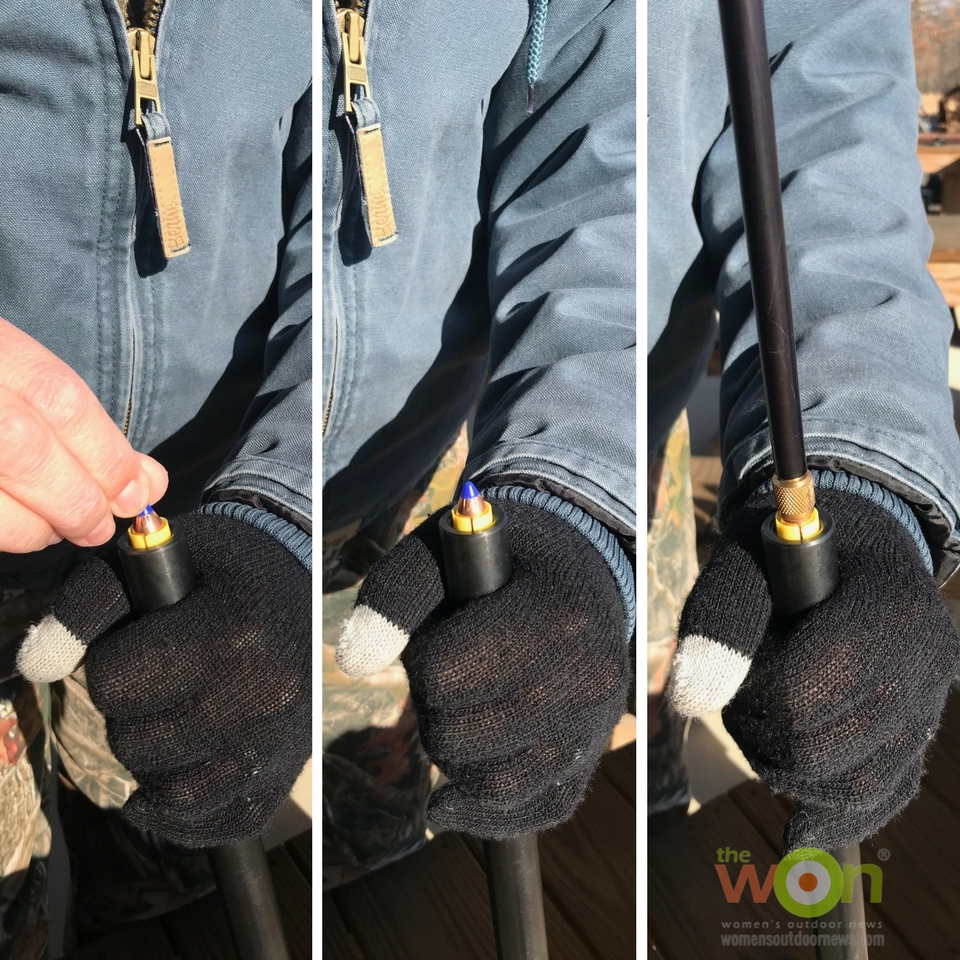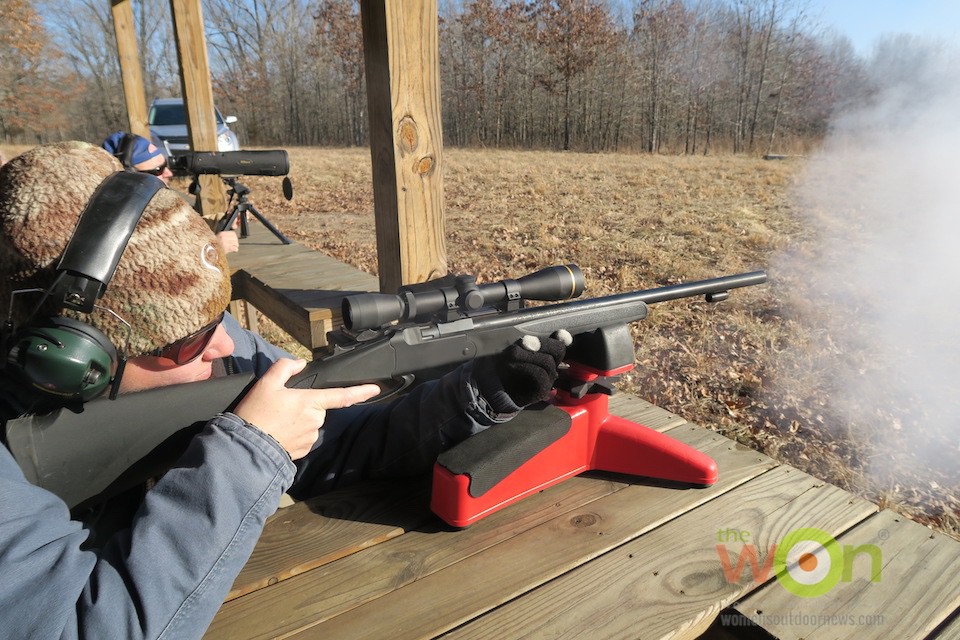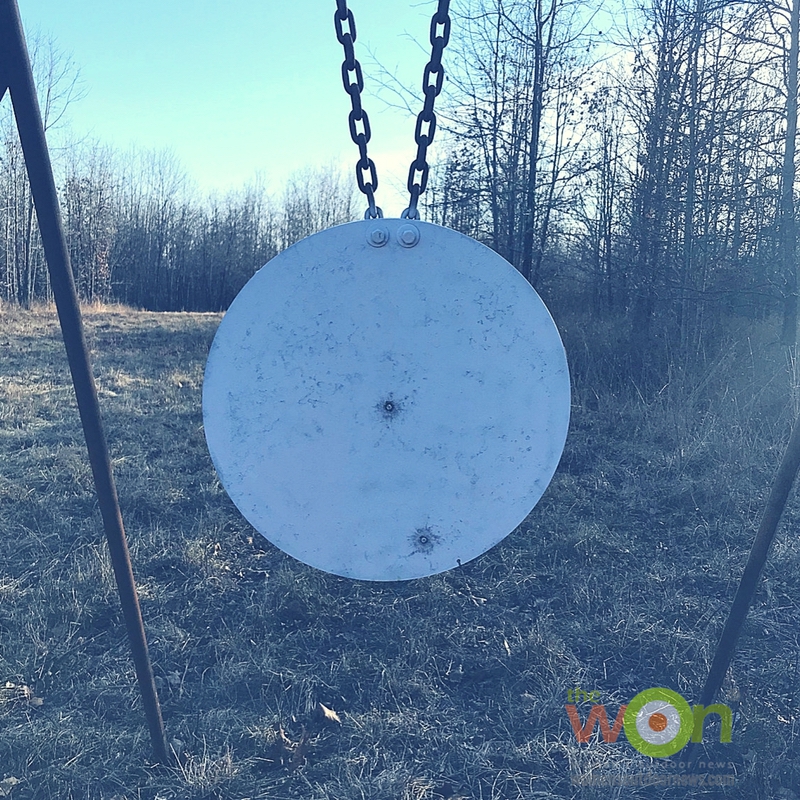Muzzleloader. To me, the word alone is enough to invoke thoughts of George Washington and muskets in primitive-type battles. To be honest, I’ve never considered shooting a muzzleloader, let alone hunting with one. However, when asked if I’d like to review the Thompson/Center Strike .50 caliber, I decided it was time to step out of my comfort zone and find out what a modern muzzleloaders is all about.
Sponsored by Thompson/Center
Several days prior to muzzleloader hunting season, I took the T/C Strike to the shooting range to sight it in. My husband is a wealth of knowledge when it comes to firearms, so thankfully he knew and brought the supplies we’d need to have on hand. As Michelle Cerino explains in her article, “Preparing for Muzzleloader Season: It’s a Dirty Job,” beyond targets and rifle rests, muzzleloaders require powder, bullets, primers and cleaning supplies. Unlike semi-automatic rifles, each shot requires a sequence of load, shoot, clean, repeat.

In order to shoot accurately at 100 yards or more, you’ll also need a good scope. I equipped my T/C Strike with the Leupold Ultimate Slam, muzzleloader scope. This specific scope is the 3-9X40 mm version and features the SABR (Sabot Ballistics Reticle) that provides aiming points for 50, 100, 150, 200, 250, and 300 yards. It took a couple shots to dial in the scope, but afterward, my shots consistently hit at 100 yards. Adjusting the windage and elevation came easy with the finger-click dials, and I found that the ¼-inch MOA adjustment clicks to be accurate.

Feeling good about my ability to hunt with this rifle, I took it to the deer blind and crossed my fingers that I’d get a shot at one. In Missouri, muzzleloader (alternative method) season is after the regular firearms portion, in late December to the first day of January. Unfortunately for me, freezing temperatures ruled during this time. Apparently, the deer felt the need to stay hunkered down somewhere other than in front of my blind, because the only critters moving were squirrels and birds. With fingers, toes, and pretty much everything else frozen, too, it became time for “Plan B.”
I’m fortunate to live within an hour’s drive of Barbara Baird, publisher of Women’s Outdoor News. She and her husband built a rifle range that extends to 400 yards, which is the prime location for “Plan B” – testing the gun to see how far it can reach. Although most muzzleloader experts recommend keeping shots at around 100 yards for maximum accuracy, I wanted to push the gun to see if it was capable of shooting to 200 or even 300 yards.

Test day temperatures measured warmer than the ones spent in the deer blind, but it still was cold and windy. I took my first few shots at a bullseye paper target 100 yards away. I didn’t need to adjust the scope, and the groups fell tight and accurate. Next came the 200-yard test. My first shot at the gong target fell low, as I expected it would be. I adjusted the elevation on the scope and took another shot. The next shot made the gong ring – signaling a hit – as did the following 2 shots. I fired a few more rounds at the paper target, still at 200 yards, since the gong circumference is larger than the bullseye target. Again, my shots hit consistently on target.
Although I don’t plan to hunt at distances over 200 yards with this muzzleloader, the gong at 300 yards tempted me to give it a try just for the sake of an extreme test. I adjusted the scope by estimating how much the bullet would drop at that distance. Focusing on my breathing and the wind gusts as if I were using a precision rifle, I slowly squeezed the trigger. Even with a valiant effort, my shot missed low. For my next shot, I aimed higher, rather than adjusting the elevation on the scope. Using the same technique as before, I let the bullet fly and it hit almost dead center on the gong! It’s exhilarating to hear that “PING!” I took 2 more shots after that, but neither hit their mark.

I can confidently say that I wouldn’t hesitate to use this rifle on my next hunt, as long as my target is within the 200-yard range. Another added benefit of the extra time spent loading, shooting, and cleaning this gun during this test is that I feel much more comfortable with a muzzleloader. Although I didn’t accomplish the task of getting a deer, I learned a lot about the gun and myself. Even though each step is tedious, this rifle is a sweet shooter and I’m thankful for the opportunity to try something new. Besides, being able to hunt with this firearm will extend my opportunities to fill that tag and the freezer next deer season, again.
Freelance writer Stacy Bright holds instructor certifications from the NRA in Pistol & Rifle, as well as being an Range Safety Officer and Refuse to be a Victim instructor. In addition to her NRA credentials, she also is a Missouri CCW instructor and teaches various other home and personal defense courses. “In a field dominated by men, I feel I bring a unique perspective to firearms and training, especially to women. I'm passionate about educating, empowering and developing confidence in those I train. In November of 2014, I started the Southwest Missouri chapter of The Well Armed Woman,” said Stacy. Stacy lives in southwest Missouri, and has been married for 20 years. Visit TWAW Facebook page: The Well Armed Woman-Springfield, MO Chapter. View all posts by Stacy Bright